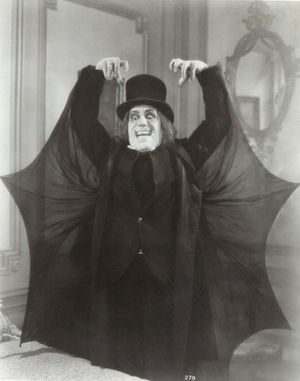Lost film
We are still looking for more information on this history of films |

A lost film is a feature or short film in which the original negative or copies are not known to exist in any studio archive, private collection, or public archive. Films can be wholly or partially lost for a number of reasons. Early films were not thought to have value beyond their theatrical run, so many were discarded afterward. Nitrate film used in early pictures was highly flammable and susceptible to degradation. The Library of Congress began acquiring copies of American films in 1909, but not all were kept. Due to improvements in film technology and recordkeeping, few films produced in the 1950s or beyond have been lost.
Conditions
During most of the 20th century, U.S. copyright law required at least one copy of every American film to be deposited at the Library of Congress at the time of copyright registration, but the Librarian of Congress was not required to retain those copies: "Under the provisions of the act of March 4, 1909, authority is granted for the return to the claimant of copyright of such copyright deposits as are not required by the Library."
A report by Library of Congress film historian and archivist David Pierce estimates that:
- around 75% of original silent-era films have perished;
only 14% of the 10,919 silent films released by major studios exist in their original 35 mm or other formats;
- 11% survive only in full-length foreign versions or film formats of lesser image quality.
- Of the American sound films made from 1927 to 1950, an estimated half have been lost.
The phrase "lost film" can also be used for instances where footage of deleted scenes, unedited, and alternative versions of feature films are known to have been created but can no longer be accounted for. Sometimes, a copy of a lost film is rediscovered. A film that has not been recovered in its entirety is called a partially lost film. For example, the 1922 film Sherlock Holmes was considered lost but eventually rediscovered with some of the original footage missing.
Stills
Many film studios hired a still photographer to take pictures during production for potential publicity use. Some are produced in quantity for display use by theaters, others in smaller numbers for distribution to newspapers and magazines, and have subsequently preserved imagery from otherwise lost films.
In some cases, such as London After Midnight, the surviving coverage is so extensive that an entire lost film can be reconstructed scene by scene from still photographs. Stills have been used to stand in for missing footage when making new preservation prints of partially lost films: for example, with the Gloria Swanson picture Sadie Thompson.
External links
- List of Lost Films article category section on the Lost Media Wiki
- Presumed Lost list at SilentEra
- International Lost Films Database
- Historic Fires at Universal Studios essay
- A Lost Film blog about lost films, outtakes, etc.
- "How Do Silent Films Become "Lost"?" essay at Silent-ology
- The Lost Movies list of 1970s titles at the Wayback Machine
- Film Threat's Top 50 Lost Films of All Time and Version 2.0
- Lost Forever: The Art of Film Preservation (2013) documentary
- American Silent Feature Film Database at the Library of Congress
- List of 7200 Lost U.S. Silent Feature Films 1912-29 at the Library of Congress
- Vitaphone Project finds and restores Vitaphone films and their soundtrack discs
- More information is available at [ Wikipedia:Lost_film ]
Chat rooms • What links here • Copyright info • Contact information • Category:Root